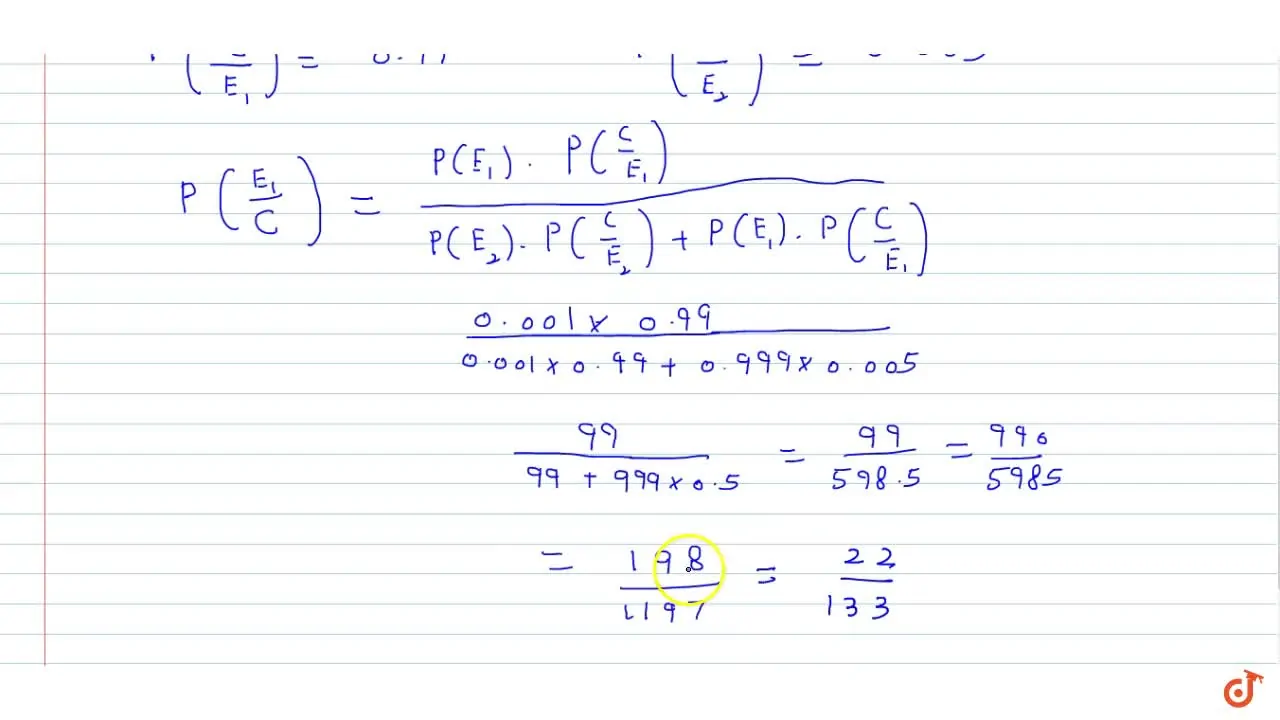A laboratory blood test is 99% effective in detecting a certain disease when it is in fact, present. However, the test also yields a false positive result for 0.5% of the healthy person tested (i.e. if a healthy person is tested, then, with probability 0.005, the test will imply he has the disease). If 0.1 percent of the population actually has the disease, what is the probability that a person has the disease given that his test result is positive?
Let, the events that a person has a disease and a person has no disease be denoted by and respectively.
It is given that,
i.e.,
Now, as we know that the events and are complementary to each other.
Therefore,
Now, if the event that the blood test result is positive is denoted by .
Then, according to the question,
and,
It is asked to find the probability that a person has the disease given that his test result is positive, i.e., .
It can be calculated as follows,
or,
Which is the required probability.
Similar Questions
What is personality test ?
View SolutionIodine test used to detect
View SolutionCarbylamine test is used in the detection of
View SolutionELISA test is used for the detection of
View SolutionWIDAL test is used for the detection of
View SolutionELISA test is used for the detection of
View SolutionThe percentage of marks obtained by a student in a monthly test is as follows:

What is the probability that the student gets more than 75% marks in a test?View SolutionIodine test is used to detect
View SolutionMarsh test is applied for the detection of
View SolutionOne percent of the population suffers from a certain disease. There is blood test for this disease, and it is 99% accurate, in other words, the probability that it gives the correct anwer is 0.99, regardless of whether the person is sick or healthy. A person takes the blood test, and the result says that he has the disease. The probability that he actualy has the disease is
View Solution


